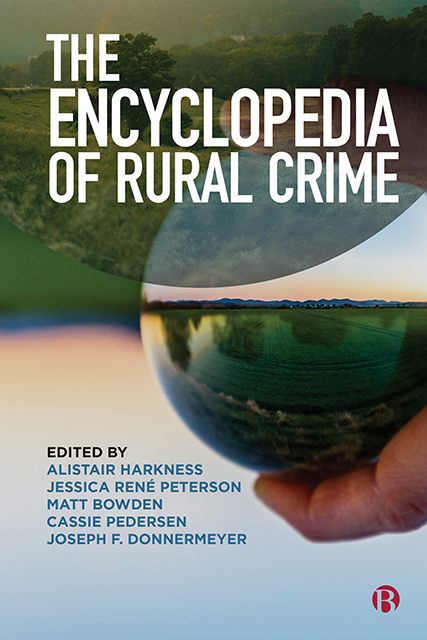Book contents
60 - Post-release, Rural Re-entry and Recidivism
Published online by Cambridge University Press: 20 June 2023
Summary
Upon leaving jails and prisons, justice-involved individuals face considerable obstacles in their post-release transition into the community. Research has demonstrated challenges related to obtaining employment and housing, attaining basic needs (such as identification and clothing), collateral consequences stemming from their criminal history, family and social support issues, and difficulty obtaining treatment or services related to substance use or mental or physical health. Whilst all these factors can impact recidivism rates, most research has focused on those returning to urban areas. Whilst fewer in number, individuals transitioning from incarceration to rural communities face many of these same challenges; however, some re-entry challenges are exacerbated or manifest differently in rural locations (see Ward, 2017).
Rural re-entry is defined as the process of leaving incarceration and returning to a rural area. The overall topic of re-entry (generally referred to as prisoner re-entry) gained traction in 2003 and 2005 by the publication of seminal works of Joan Petersilia’s When Prisoner’s Come Home and Jeremy Travis’ But They All Come Back, respectively (see suggested readings). Research on re-entry generally examines the factors that impede an individual’s successful transition to the community, often leading to recidivism (that is, re-arrest, re-conviction or re-incarceration).
Re-entry programming, that often begins whilst incarcerated (in-reach) and continues into the community, have been used as a method to combat recidivism with varying levels of success. The Counsel of State Governments (in the United States) maintains a repository of programme evaluations that demonstrate success called the ‘What Works in Reentry Clearinghouse’. Out of 102 programmes listed in 2021, 60 per cent showed to either be ‘effective ‘ or ‘promising’ in numerous re-entry outcomes. Whilst producing mostly positive results, the vast majority of the evaluations in the Clearinghouse relate to programmes in urban areas, leaving questions about the effectiveness of rural programmes.
In 2006, Eric Wodahl (2016) called for a rural perspective for re-entry as rural communities have unique features that often make urban-based policies and programmes culturally, economically and socially ineffective.
- Type
- Chapter
- Information
- The Encyclopedia of Rural Crime , pp. 237 - 240Publisher: Bristol University PressPrint publication year: 2022



